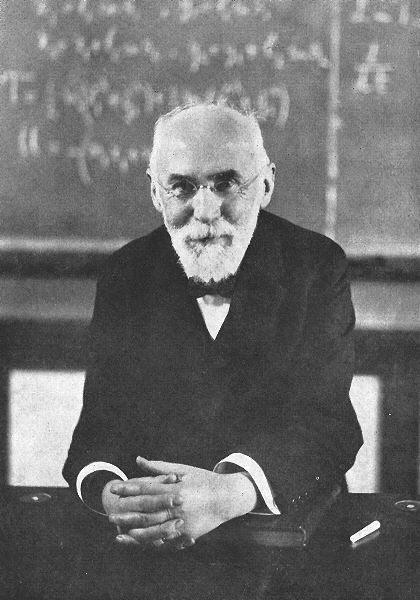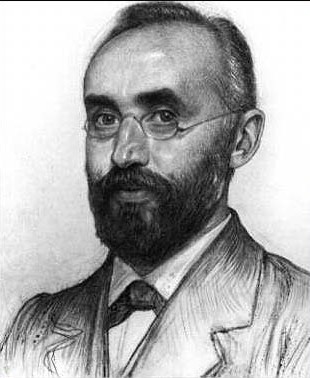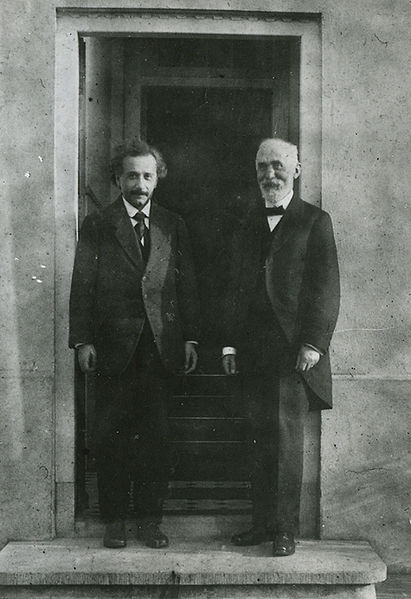<Back to Index>
- Physicist Hendrik Antoon Lorentz, 1853
- Novelist William Makepeace Thackeray, 1811
- President of South Africa Nelson Rolihlahla Mandela, 1918
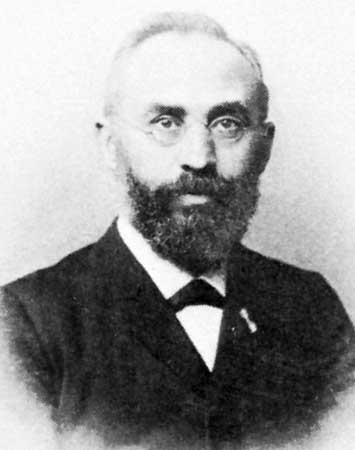
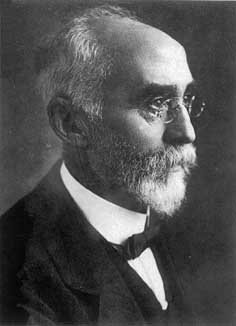
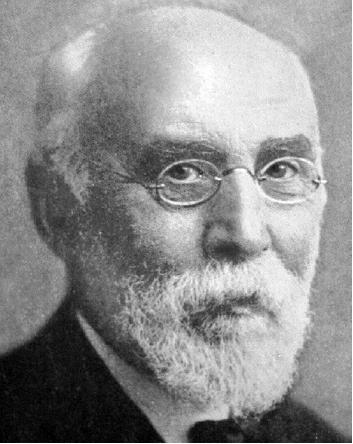
Hendrik Antoon Lorentz (18 July 1853 – 4 February 1928) was a Dutch physicist who shared the 1902 Nobel Prize in Physics with Pieter Zeeman for the discovery and theoretical explanation of the Zeeman effect. He also derived the transformation equations subsequently used by Albert Einstein to describe space and time.
Hendrik Lorentz was born in Arnhem, Gelderland (The Netherlands), the son of Gerrit Frederik Lorentz (1822 – 1893), a well-off nurseryman, and Geertruida van Ginkel (1826 – 1861). In 1862, after his mother's death, his father married Luberta Hupkes. From 1866-1869 he attended the newly established high school in Arnhem, and in 1870 he passed the exams in classical languages which were then required for admission to University.
Lorentz studied physics and mathematics at the University of Leiden, where he was strongly influenced by the teaching of astronomy by professor Frederik Kaiser; it was his influence that led him to become a physicist. After earning a bachelor's degree, he returned to Arnhem in 1872 to teach high school classes in mathematics, but he continued his studies in Leiden next to his teaching position. In 1875 Lorentz earned a doctoral degree under Pieter Rijke on a thesis entitled "Over de theorie der terugkaatsing en breking van het licht" (On the theory of reflection and refraction of light), in which he refined the electromagnetic theory of James Clerk Maxwell.
In 1881 Hendrik married Aletta Catharina Kaiser, niece of Frederik Kaiser. She was the daughter of Johann Wilhelm Kaiser, director of the Amsterdam's Engraving School and professor of Fine Arts, and designer of the first Dutch postage stamps (1852). Later Kaiser was the Director of the National Gallery of Amsterdam. Hendrik and Aletta's eldest daughter Geertruida Luberta Lorentz was to become a physicist as well.
In 1878, only 24 years of age, Hendrik Antoon Lorentz was appointed to the newly established chair in theoretical physics at the University of Leiden. On January 25, 1878, he delivered his inaugural lecture on "De moleculaire theoriën in de natuurkunde" (The molecular theories in physics). During
the first twenty years in Leiden, Lorentz was primarily interested in
the theory of electromagnetism to explain the relationship of
electricity, magnetism, and light. After that, he extended his research
to a much wider area while still focusing on theoretical physics. From
his publications, it appears that Lorentz made contributions to
mechanics, thermodynamics, hydrodynamics, kinetic theories, solid state
theory, light, and propagation. His most important contributions were
in the area of electromagnetism, the electron theory, and relativity. Lorentz theorized that the atoms might
consist of charged particles and suggested that the oscillations of
these charged particles were the source of light. When a colleague and
former student of Lorentz, Pieter Zeeman, discovered the Zeeman effect in
1896, Lorentz supplied its theoretical interpretation. The experimental
and theoretical work was honored with the Nobel prize in physics in
1902. Lorentz' name is now associated with the Lorentz-Lorenz formula, the Lorentz force, the Lorentzian distribution, and the Lorentz transformation. In 1895, with the attempt to explain the Michelson-Morley experiment, Lorentz proposed that moving bodies contract in the direction of motion (length contraction; George FitzGerald had already arrived at this conclusion).
Lorentz worked on describing electromagnetic phenomena (the propagation
of light) in reference frames that moved relative to each other. He
discovered that the transition from one to another reference frame
could be simplified by using a new time variable which he called local time.
The local time depended on the universal time and the location under
consideration. Lorentz's publications (of 1895 and 1899) made use of
the term local time without giving a detailed interpretation of its
physical relevance. In 1900, Henri Poincaré called
Lorentz's local time a "wonderful invention" and illustrated it by
showing that clocks in moving frames are synchronized by exchanging
light signals that are assumed to travel at the same speed against and
with the motion of the frame. In 1899, and again in his paper Electromagnetic phenomena in a system moving with any velocity smaller than that of light (1904), Lorentz added time dilation to his transformations and published what Poincaré in 1905 named Lorentz transformations. It was apparently unknown to Lorentz that Joseph Larmor had
used identical transformations to describe orbiting electrons in 1897.
Larmor's and Lorentz's equations look somewhat unfamiliar, but they are
algebraically equivalent to those presented by Poincaré and
Einstein in 1905. Lorentz's
1904 paper includes the covariant formulation of electrodynamics, in
which electrodynamic phenomena in different reference frames are
described by identical equations with well defined transformation
properties. The paper clearly recognizes the significance of this
formulation, namely that the outcomes of electrodynamic experiments do
not depend on the relative motion of the reference frame. The 1904
paper includes a detailed discussion of the increase of the inertial
mass of rapidly moving objects. In 1905, Einstein would use many of the
concepts, mathematical tools and results discussed to write his paper
entitled "Elektrodynamik" (Electrodynamics) known today as the theory of special relativity. Because Lorentz laid the fundamentals for the work by Einstein, this theory was called the Lorentz-Einstein theory originally.
The increase of mass was the first prediction of special relativity to be tested, but from early experiments by Kaufmann it appeared that his prediction was wrong; this led Lorentz to the famous remark that he was "at the end of his Latin." The
confirmation of his prediction had to wait until 1908. In 1909, Lorentz
published "Theory of Electrons" based on a series of lectures in
Mathematical Physics he gave at Columbia University.
While
Lorentz is mostly known for fundamental theoretical work, he also had
an interest in practical applications. In the years 1918-1926, at the
request of the Dutch government, Lorentz headed a committee to
calculate some of the effects of the proposed Afsluitdijk (Closure Dike) flood control dam on other seaworks in the Netherlands. Hydraulic engineering was
mainly an empirical science at that time, but the disturbance of the
tidal flow caused by the Afsluitdijk was so unprecedented that the
empirical rules could not be trusted. Lorentz proposed to start from
the basic hydrodynamic equations of motion and solve the problem numerically. This was feasible for a "human computer", because of the quasi-one-dimensional nature of the water flow in the Waddenzee. The Afsluitdijk was completed in 1933 and the predictions of Lorentz and his committee turned out to be remarkably accurate. One of the two sets of locks in the Afsluitdijk was named after him. In 1912 Lorentz retired early to become director of research at Teylers Museum in Haarlem, although he remained external professor at Leiden and gave weekly lectures there. Paul Ehrenfest succeeded
him in his chair at the University of Leiden, founding the Institute
for Theoretical Physics which would become known as the Lorentz Institute. In addition to the Nobel prize, Lorentz received a great many honours for his outstanding work. He was elected a Fellow of the Royal Society in 1905. The Society awarded him their Rumford Medal in 1908 and their Copley Medal in 1918. Lorentz died in Haarlem,
Netherlands. The respect in which he was held in the Netherlands is
apparent from O. W. Richardson's description of his funeral:
